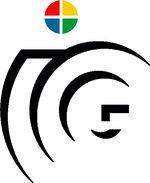Abstract
In this talk, I refer to the selected properties of human visual perception, which can be used to improve the perceived image quality and rendering performance. In the first part of my talk I focus on various aspects of foveated rendering such as latency reduction and dependence on rendered content. I discuss also foveation in the context of perceived scene depth enhancement on stereo 3D displays as well as the eye lens accommodation on a prototype display that can reproduce this important visual cue. Then, I move to the problem of image quality evaluation, where a convolutional neural network is trained to predict the local visibility of rendering artifacts as perceived by the human observer. As 3D fabrication might be considered as an alternative way of displaying virtual content, I discuss the problem of texture appearance reproduction that is affected by light diffusion that is particularly severe for highly translucent resin-based print materials. I present a solution that counteracts such heterogeneous scattering to obtain the impression of a crisp albedo texture on top of the 3D print, by optimizing for a fully volumetric material distribution that preserves the target appearance.
Short Bio
Karol Myszkowski is a senior researcher at the MPI Informatik, Saarbruecken, Germany. In the period from 1993 till 2000 he served as an associate professor in the Department of Computer Software at the University of Aizu, Japan, while between 1986 and 1992 he worked for Integra, Inc. a Japan-based, company specialized in developing rendering and global illumination software. He received his PhD (1991) and habilitation (2001) degrees in computer science from Warsaw University of Technology (Poland). In 2011 he was awarded with a lifetime professor title by the President of Poland. His research interests include global illumination and rendering, perception issues in graphics, high dynamic range imaging, stereo 3D, image/video quality evaluation, computational display and fabrication. He co-authored the book High Dynamic Range Imaging, and participated in various committees and editorial boards. He also co-chaired Rendering Symposium in 2001, ACM Symposium on Applied Perception in Graphics and Visualization in 2008, Spring Conference on Computer Graphics 2008, Graphicon 2012, and CAD/Graphics 2019.

